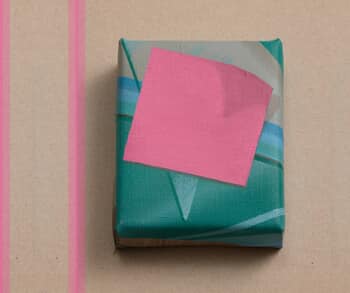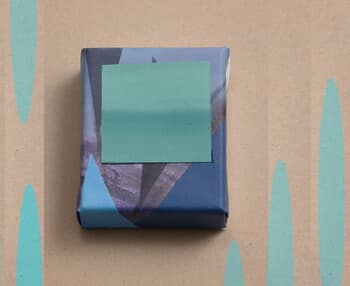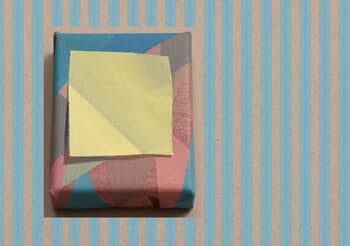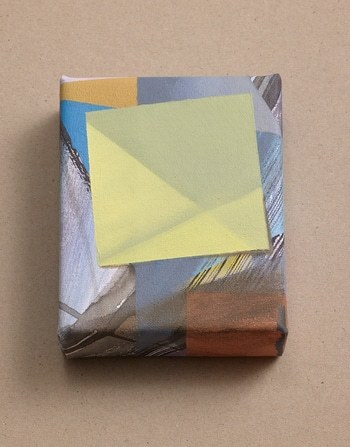Browse installation art for sale online today. Our online gallery showcases installation art that transforms environments into engaging spaces. We recommend starting your search with science and technology or typography installation art.
Take a look at the work of Rebecca Mason whose combination of text with neon light conveys the darker side of human existence and emotion. Mason effectively draws upon the connotations of neon light in order to make bold statements on life, love, money and culture.
For more light-based pieces, don’t miss Michael Wallner. Though he works primarily in print, Wallner’s innovation in his installation art is exceptional. He creates unique works including a magnetic piece which allows you to arrange the colours yourself, as well as neon and LED art. His next piece will feature a motion sensor, allowing the viewer to trigger the artwork.
Finally, explore the work of Anna Green whose painting installations succeed in capturing the sense of a place without actually depicting it. Green explores and witnesses everyday activities of people in certain areas and represents these as fragments of the original location, rather than whole memories, creating a trace of what actually occurred. Take a look for yourself and see just how stunning the result is.
Discover more installation artists here.
History of Installation Art
Installation art is the term used to describe large-scale, mixed-media constructions which are designed to transform the perception of a space. They are often ephemeral and designed to be exhibited in one specific location. Formerly known and sometimes still described as ‘environments’, they often occupy an entire room or gallery space through which the viewer must walk in order to fully engage with the piece. Meanwhile some are smaller and designed to be walked around and contemplated, and some are so fragile that they may only be viewed from a doorway or one end of a room. The focus in installation art is upon the way in which the spectator experiences the piece and the desire to provide them with an intense experience is a key theme. Spectators are engaged in multiple ways and are made to become part of the art, with the piece becoming something that they can touch, hear, feel or smell.
The installation art medium emerged out of ‘environments’ which were created by artists such as Allan Kaprow from around 1957 onwards, though these were inspired by works such as Kur Schwitter’s Merzbau – an environment of several rooms created in the artist’s own house in Hanover.
From the 1960s the creation of installations has become a major aspect of modern art, particularly from the early 1990s when an interest in conceptual art, based upon ideas rather than objects, was reawakened.
This act of artistically addressing all of the senses with regard to a total experience made its debut in 1849 with Richard Wagner’s Gesamtkunstwerk – an operatic work for the stage which drew inspiration from ancient Greek theatre and included all major art forms, from painting and writing to music.
Mixed materials, light and sound all remain fundamental elements of installation art to this day.
Styles and Techniques of Installation Art
Installation art takes on many forms, including the use of every day and natural materials which are often chosen for their ‘evocative’ qualities, as well as new media such as video, sound, performance, immersive virtual reality and the internet. The focus is always upon a broader sensory experience, rather than framed points of focus on a wall or the display of isolated objects upon a literal pedestal.
There are several kinds of interactive installations, including web-based, gallery-based and digital-based. All involve the audience acting on the work or the piece responding to the activity of the user. They appeared mostly at the end of the 1980s but became a genre during the 1990s when artists became particularly interested in the idea of using the participation of audiences to activate and reveal the true meaning of the installation.
Another form of installation art is immersive virtual reality. Improvements in technology mean that artists are increasingly able to explore beyond boundaries which constrained them in the past. Experimental and bold media plays a role and sensors may be involved which play upon the audiences’ movement when observing the installation.
From the introduction of live animals into the gallery space by Jannis Kounellis and the lard and felt installation of Joseph Beuys to Tracey Emin’s presentation of her bed as a piece of art, the installation art movement has taken many forms and continues to change and evolve to this day.
Famous Installation Artists
American painter Allan Kaprow is credited with having pioneered the installation art medium. His ‘happenings’, a form of spontaneous, non-linear action, revolutionised performance art. He began as a painter but by the mid 1950s his interest had turned to the theoretical, based primarily on the shifting concepts of space as subjectively experienced by the viewer. He focused upon an intellectual and theorized view of art and called for an end to craftsmanship and permanence in art, instead demanding that artists shift their attention to ‘non-concrete’ or ephemeral modes of production.
Yayoi Kusama is Japan’s most prominent artist who has continuously innovated and reinvented her style across the nine decades of her life which have taken her rural Japan to the New York art scene to contemporary Tokyo. She has lived voluntarily in a psychiatric institution since 1977 and much of her work is marked with obsession and a desire to escape from psychological trauma. Among her most famous pieces are her installations that immerse the viewer in her obsessive vision of endless dots and nets, or infinitely mirrored space.









